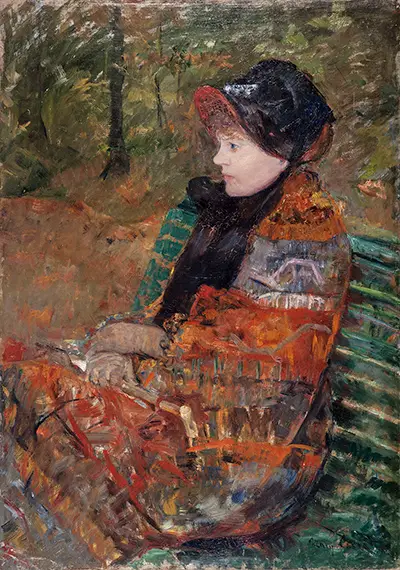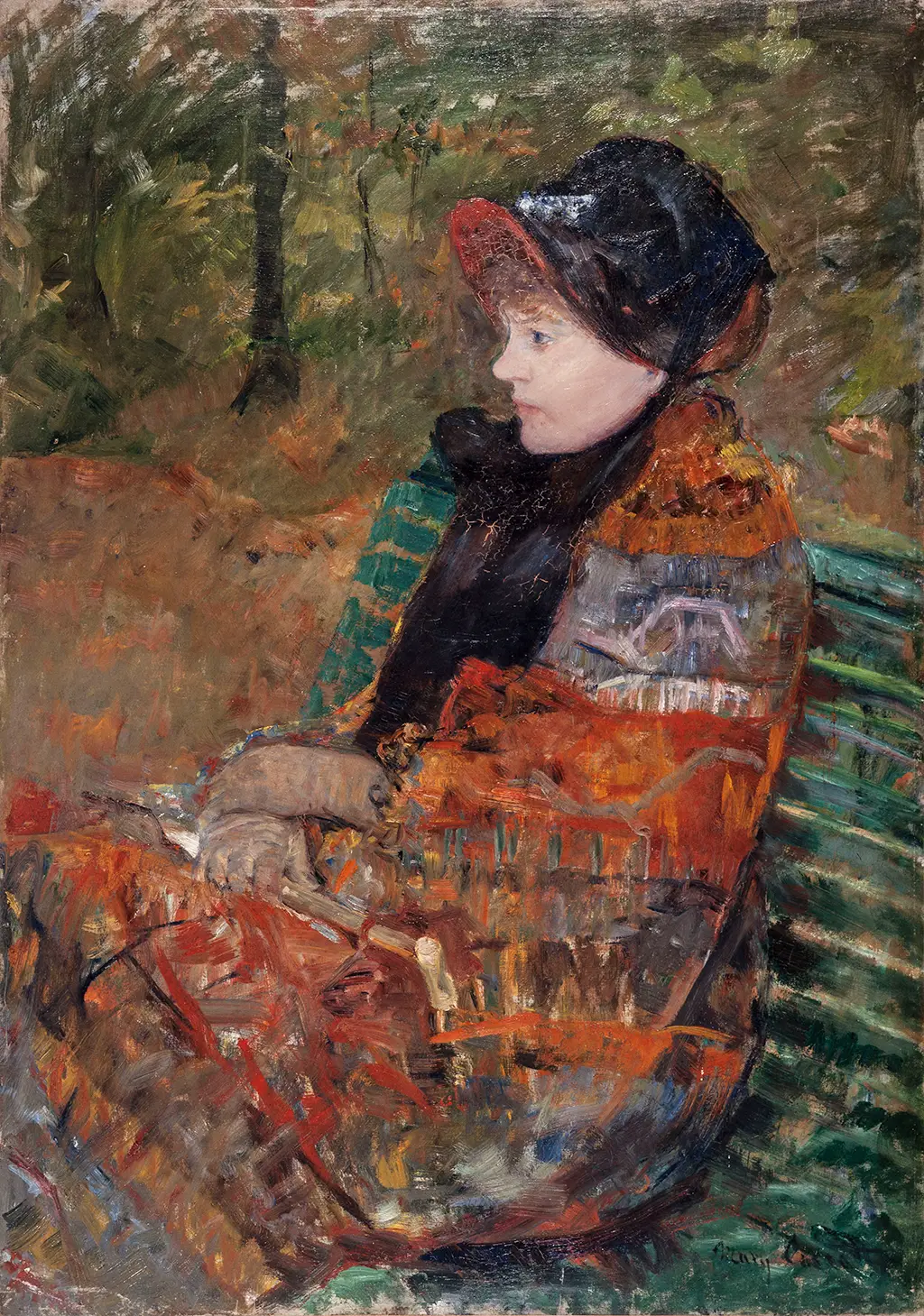 Buy Art Prints Now
Buy Art Prints Nowfrom Amazon
* As an Amazon Associate, and partner with Google Adsense and Ezoic, I earn from qualifying purchases.
This painting from 1880 is titled Autumn, Portrait of Lydia Cassatt. It features the artist's sister sat outdoors, wrapped up warm. She was ill at the time and would pass away two years later.
Mary was concerned about her sister's health when painting this artwork and could see some of her character starting to drift away as her condition worsened. Eventually, Lydia Cassatt died of Bright's disease, a kidney ailment, in 1882. She was just 45 at the time and this deeply upset her sister, understandably.
One can tell that this portrait was a means to celebrate her sister and to appreciate their time together, perhaps suspecting that the future was unclear. Lydia was set outdoors here, wrapped in a whole series of coats, blankets and other warm items in order to counteract the cold of Autumn. She wears a black bonnet that is tied around her neck, with the ribbon hanging down onto her chest.
Her face is noticeably paler than her hands, suggesting that either she is wearing gloves or that some light has come in from outside of the composition. Her outfit is as pretty as it is pragmatic, with a series of patterns working in a horizontal direction and featuring a variety of colours that adds plenty to the overall piece.
She sits on a green wooden bench which curves over at the top, styled similarly to the ones we might find in a public location, such as a park. The hard, solid nature would be best suited to taking a large number of people, as opposed to the type you might choose for your own garden.
Behind her sister we see a walkway with a series of trees and perhaps a street light along the way. The artist allows glints of light to shine through from behind the bench which loosely match the angle of pattern across Lydia's clothing.
It is a touching portrait when you consider the backstory behind the model's life, as well as the fate that unfortunately awaits her two years later. The artist chooses to produce, and title, this piece in Autumn and this encourages her to use brown and green tones throughout which add to the feeling of warmth and the sister looks out to our left, deep in thought.
To the best of our knowledge, this painting now resides within a private collection, although there is some evidence that it may be found in the collection of the Petit Palais, Musée des Beaux-Arts de la Ville de Paris. Either way, it offers us an important insight into the personal life of the artist and fills in some blanks regarding her sister, as little else is really known about the life of Lydia.
The nature of life in the 19th century made situations like this fairly common, which is one of the reasons why so many families would have much larger numbers of children in order to account for the much shorter life expectancies of that era, though the Cassatt were from a privileged background and so would have hoped that Lydia's illness might have been treated more successfully than it ultimately was.





